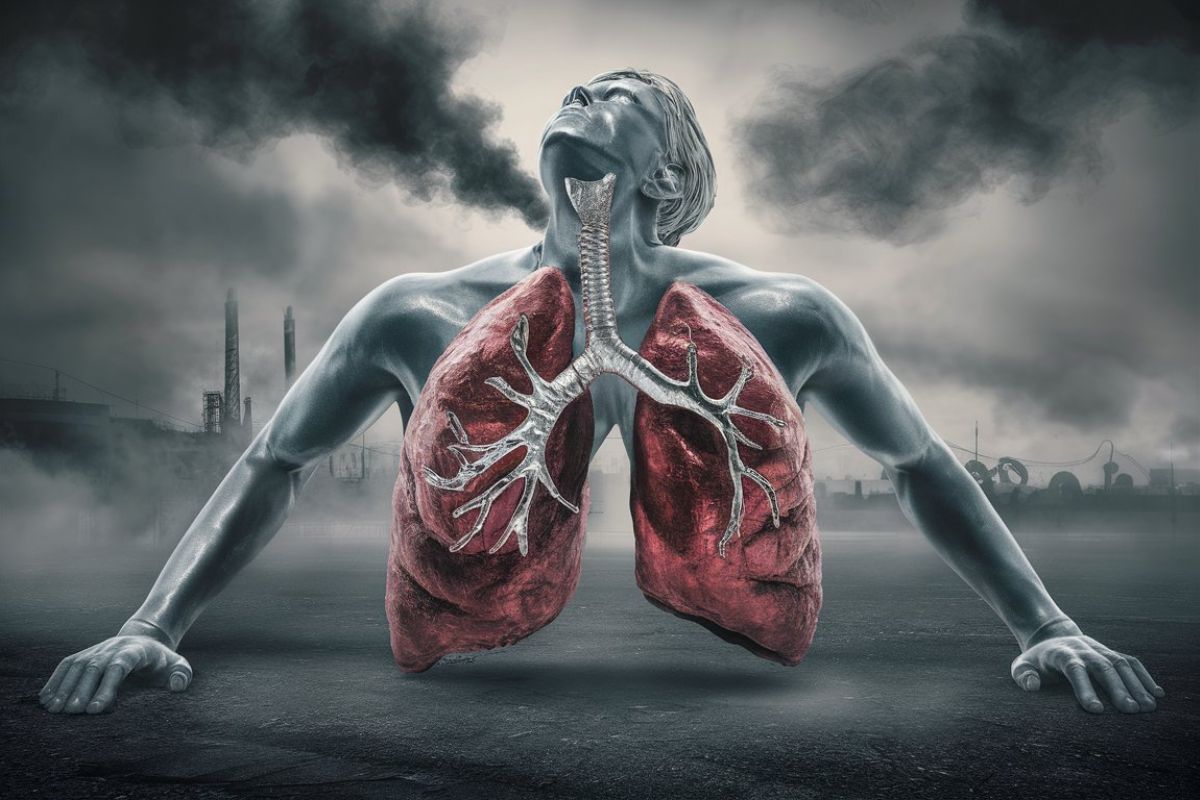
Aluminium lung, also known as aluminosis, is a lung disease caused by inhaling aluminium dust or fumes. This condition primarily affects workers in industries where aluminium is processed or used extensively. Aluminium lung can lead to serious respiratory issues, including chronic bronchitis and fibrosis. Symptoms often include coughing, shortness of breath, and chest pain. Understanding the risks and preventive measures is crucial for those working in environments with high aluminium exposure. This article will provide 20 essential facts about aluminium lung, shedding light on its causes, symptoms, and ways to protect yourself from this occupational hazard.
What is Aluminium Lung?
Aluminium lung, also known as aluminosis, is a condition caused by inhaling aluminium dust or fumes. This occupational disease primarily affects workers in industries where aluminium is processed or used extensively. Let's dive into some fascinating facts about this condition.
Historical Background
Understanding the history of aluminium lung helps us appreciate the advancements in workplace safety.
-
First Identified in the 1930s: Aluminium lung was first identified among workers in the aluminium industry during the 1930s. The condition was linked to prolonged exposure to aluminium dust.
-
Early Cases in Germany: The earliest documented cases were reported in Germany, where aluminium production was booming. Workers exhibited respiratory issues that were later attributed to aluminium exposure.
Causes and Risk Factors
Knowing what causes aluminium lung and who is at risk can help in prevention.
-
Inhalation of Aluminium Dust: The primary cause of aluminium lung is the inhalation of fine aluminium dust particles. These particles can accumulate in the lungs over time, leading to respiratory problems.
-
High-Risk Occupations: Jobs in aluminium smelting, welding, and manufacturing are high-risk for developing aluminium lung. Workers in these fields are often exposed to aluminium dust and fumes.
-
Lack of Protective Gear: Inadequate use of protective gear, such as masks and ventilation systems, increases the risk of developing aluminium lung. Proper safety measures are crucial in preventing this condition.
Symptoms and Diagnosis
Recognizing the symptoms early can lead to better management of the condition.
-
Chronic Cough: One of the most common symptoms is a persistent cough that doesn't go away. This cough is often dry and can be accompanied by wheezing.
-
Shortness of Breath: Individuals with aluminium lung often experience difficulty breathing, especially during physical activity. This symptom can worsen over time.
-
Chest Tightness: A feeling of tightness or discomfort in the chest is another symptom. This can be mistaken for other respiratory conditions, making diagnosis challenging.
-
X-Ray Findings: Diagnosis often involves chest X-rays, which can reveal abnormalities in the lungs. These abnormalities are indicative of aluminium dust accumulation.
Treatment and Management
While there is no cure, several treatments can help manage the symptoms.
-
Bronchodilators: Medications that help open up the airways, known as bronchodilators, are commonly prescribed. These can ease breathing difficulties.
-
Corticosteroids: In some cases, corticosteroids are used to reduce inflammation in the lungs. These drugs can help alleviate symptoms but come with potential side effects.
-
Oxygen Therapy: For severe cases, oxygen therapy may be necessary. This treatment helps ensure that the body gets enough oxygen despite impaired lung function.
Prevention and Safety Measures
Prevention is always better than cure, especially in occupational diseases.
-
Proper Ventilation: Ensuring proper ventilation in workplaces where aluminium is processed can significantly reduce the risk of inhaling harmful dust.
-
Use of Respirators: Wearing respirators or masks designed to filter out fine particles is essential for workers in high-risk industries.
-
Regular Health Screenings: Regular health check-ups and lung function tests can help detect early signs of aluminium lung, allowing for timely intervention.
Research and Future Directions
Ongoing research aims to better understand and combat aluminium lung.
-
New Diagnostic Tools: Researchers are developing advanced diagnostic tools to detect aluminium lung earlier and more accurately. These tools could lead to better outcomes for affected individuals.
-
Improved Treatment Options: Studies are underway to find more effective treatments with fewer side effects. This includes exploring new medications and therapies.
-
Workplace Regulations: Stricter workplace regulations and enforcement can help reduce the incidence of aluminium lung. Governments and organizations are working towards better safety standards.
Interesting Facts
Some lesser-known facts about aluminium lung can provide a broader perspective.
-
Not Just Industrial Workers: While industrial workers are most at risk, aluminium lung can also affect hobbyists who work with aluminium in poorly ventilated spaces.
-
Global Issue: Aluminium lung is not confined to any one country. It is a global issue, affecting workers in various parts of the world where aluminium is processed.
Final Thoughts on Aluminium Lung
Aluminium lung, a condition caused by inhaling aluminium dust, is a serious health concern. Workers in industries like mining, welding, and manufacturing are at higher risk. Symptoms include coughing, shortness of breath, and chest pain. Long-term exposure can lead to chronic respiratory issues and even lung fibrosis.
Preventive measures are crucial. Using protective gear, ensuring proper ventilation, and regular health check-ups can help reduce risks. Employers should prioritize worker safety by implementing strict guidelines and providing necessary equipment.
Awareness is key. Understanding the dangers and taking proactive steps can make a significant difference. If you or someone you know works in an environment with aluminium dust, stay informed and take precautions. Your health is invaluable, and taking these steps can help protect it.
Was this page helpful?
Our commitment to delivering trustworthy and engaging content is at the heart of what we do. Each fact on our site is contributed by real users like you, bringing a wealth of diverse insights and information. To ensure the highest standards of accuracy and reliability, our dedicated editors meticulously review each submission. This process guarantees that the facts we share are not only fascinating but also credible. Trust in our commitment to quality and authenticity as you explore and learn with us.


